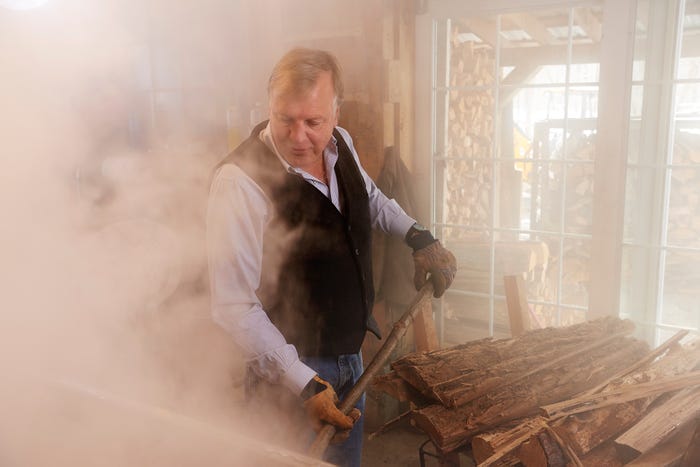Maple syrup may be the culinary ingredient of 2020. Here’s why
Double-digit sales increases and a record-setting syrup yield indicates maple syrup fervor is here to stay.

Many industries and product categories are suffering in 2020. But maple syrup? It’s seeing one of its best years ever.
According to the recently published USDA National Agricultural Statistics Service, 2020 was a record-setting year for U.S. maple syrup farmers, who produced 4.4 million gallons of the sweet sauce—nearly 200,000 gallons more than in 2019.
Maple syrup farmers or “sugarmakers” are most prolific in Vermont, which produces about half of all maple syrup in the United States, followed by New York and Maine.
While road-side and small-scale maple syrup sellers are experiencing lower sales—largely due to fewer tourists visiting New England due to COVID-19, the wholesale maple syrup business is, well, tapped out.
“It’s gone crazy,” says Arnold Coombs, a seventh generation sugarmaker and director of sales and marketing at Coombs Family Farms. “Consumer packaged sales were up 30-40% this spring over last year—and this was supposed to be our slow time.”
Coombs attributes such impressive sales increases to more people cooking during the pandemic and using maple syrup as a culinary ingredient (not just for morning pancakes, although that remains a top maple syrup use case … because it’s delicious).
According to a recent survey of 1,005 adults, 54% of Americans are cooking more at home due to COVID-19.
Keeping pace with demand
Coombs says keeping pace with maple syrup demand during a pandemic has not been a challenge. The company taps 105,000 trees on their own 3,600-acre farm near Brattleboro, Vermont, and sources from another 3,000 farmers in New England and upstate New York. Employees often work in rural forest land—not a workplace that carries much risk of coronavirus exposure.
Because syrup is made in the spring, and sold throughout the year, Coombs isn’t worried about ingredient supply. What COVID-19 has disrupted is the company’s maple syrup packaging. “We contract out long-term for glass bottles, and we have already used up this year’s supply,” he says.

While he can typically find more bottles and plastic jugs for bottling, it is the plastic caps he is having a harder time sourcing. He believes many plastic cap manufacturers are prioritizing clients that manufacture hand sanitizer. “You can get an ‘out of stock’ for a couple days on a shipment that you already ordered—it creates issues that we didn’t have before. There are fairly regular delays,” Coombs says.
That said, Coombs seems to be confident the market for maple syrup will continue to rise throughout 2020—and potentially usurp pumpkin spice’s top place as flavor and ingredient of the fall and winter. The survey of 1,005 adults also indicated that 51% of adults who are cooking more also plan to continue their cooking spree after the pandemic ends.
Whether it be grilled salmon, Old Fashioned cocktails, baked dishes or, yes, pancakes, maple syrup is primed to be a more prolific pantry staple in many kitchens across the U.S.
About the Author(s)
You May Also Like




